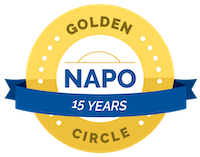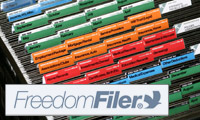Making your keys easy to identify
In the September of 2013, I spent a little time trying to get a handle on the mass of unidentified keys I had floating around my house.
I blogged about it then and I created some solutions that have worked pretty well for me.
One thing I didn’t cover in that blog post is my affinity for using to color to help me easily identify the keys I keep on my main key chain. At one point, I had a copy of a key made and selected a special key whose top was covered with a hard blue plastic adhered to the key. But the hard plastic broke off. So I painted it with blue nail polish instead, with fairly unsatisfactory results.
I also put a green patterned key cap on my main back-door key, which has worked out well, but I have to rely on my memory to know which key it is. That’s not too big a deal, but it does require a little bit of thought.
So I was delighted when the folks at label-label® approached me and asked if they could send me a sample of their all-in-one key cap to review.
Label-label key caps combine my love of color coding with my love for labels. You adhere a label to the key, then fit the key cap over it. There’s a window cut out in the key cap to reveal the label.
Simple in its brilliance, right? Here’s a picture of two of my keys on my main key ring, which have been label-labeled.

The label-label key cap kit comes with appropriately sized pre-printed labels as well as a set of blank labels that you can write on before sticking them on the key. They labels are laminated and I found the instructions a little confusing for peeling off first the backing the laminated topper and then the backing of the label itself. Once I got the hang of it, though, it was easy. And the lamination has held up well.
It occurred to me that I could probably use a laminated label from my Brother P-Touch label maker to more easily (and neatly) create a key label. I haven’t had the chance to try it yet.
The pack I was sent came with eight caps, each a different color. One nice little feature of the key cap is the little nubbin at the hole end of the key. If you put the nubbin so that it’s on the top when your key is in the keyhole, you don’t have to worry about putting your key in upside down. That’s particularly helpful when the lighting is dim.
If you all the keys look alike, this might be a great solution for you. They’re making me very happy. It’s the little things, right?
Tagged with: keys
Comments
Links
- Organize Your Family History
- National Association of Productivity and Organizing Professionals
- NAPO St. Louis
- Ravelry
- Shannon Wilkinson, life coach
- Getting to Good Enough podcast
- Peace of Mind Budgeting
- Institute for Challenging Disorganization
- Are you interested in becoming a professional organizer?







